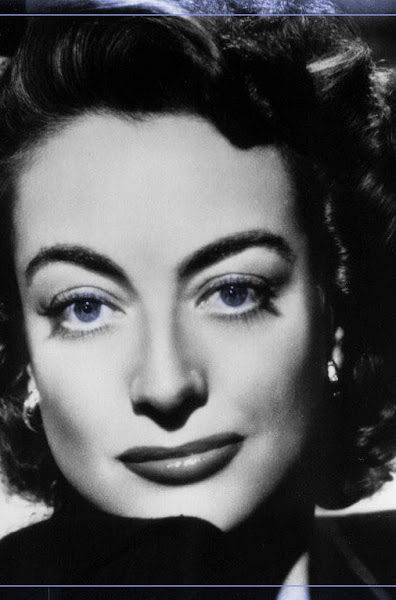 *** out of ****
*** out of ****
If someone were to ask you where in the Bible is a reference to homosexuality, could you tell him or her? If someone were to attempt to persuade you the Bible claims outright that homosexuality is wrong, could you defend yourself?
Ky Dickens’ didactic “Fish out of Water” (2009) is an engaging resource for those that cannot defend themselves against those who take it upon themselves to be “Biblical spokespeople.” The part-2D animated film, part-documentary delineates the “grossly misinterpreted” Biblical passages used ritually to condemn those who identify as GLBTQ, including the stories of Adam and Eve and Sodom and Gomorrah, the passages of Leviticus, and the writings of Paul in Romans, Corinthians, and Timothy.
Although it plays like a History Channel program, with its assemblage of found footage, including photographs, statistics, newspaper headlines, instructional videos, amateur footage, old films, and art, “Fish out of Water” uses these tools to its advantage in involving the spectator, who probably identifies as GLBTQ. Hopefully eventually, this adorable film can find its rightful audience in the mainstream, which seems to be Dickens’ intention all along – to communicate this information through the widely disseminated medium of film.
Dickens claims rightfully that religious conviction plays a huge role in modern discrimination against gay marriage rights, including the institution of Prop 8 in California. Moreover, Dickens asserts rightfully (again) that many of these religious beliefs are often personally un-researched and founded in hearsay. Her film’s goals, then, are threefold: 1.) To “out,” so to speak, these popular convictions based on hearsay; 2.) To prove how the Bible – being a book – cannot be interpreted without its cultural, social, and linguistic contexts; and 3.) To change people’s minds by informing the mainstream why they have been wrong to discriminate against GLBTQ people.
Although Dickens’ film is multifaceted and multifarious in its uses of the film medium (documentary, animation, etc.), I see something in her film that is rare in others: It is structured like an essay. This aspect is important because it assigns her narration a level of intelligence that makes her statements hard to brush off (not to mention the intelligence of the educated theologians she calls on to teach these commonly misinterpreted Biblical passages to viewers.) Dickens delineates her film with theses, “first”-s, “next”-s, etc. A Vanderbilt alumnus, indeed, as Dickens notes in the exposition of her film.
Besides theologians, Dickens films interviews with staunch opponents of GLBTQ rights, such as Fred Phelps, famously of the Westboro Baptist Church (a.k.a. God Hates Fags). Although he speaks his mind, often conflating members of the groups he opposes, including Jews and gays, Phelps’ outrageous statements end up being completely laughable, surrounded as they are among a sea of educated responses. Oddly enough, they might be the (very ironic) comic relief of the film.
Dickens is only a first-time filmmaker, but her work is compelling and likable. Many who identify as GLBTQ – myself included – would have begged for a resource such as this one prior to this film’s creation. Well, here it is: cute on the outside, subversive on the inside. Dickens might have felt like a “fish out of water,” referring to the film’s title, but she brings everyone in right with her.
*As seen in the April 2010 issue of "Out & About" newspaper. To access it, click here.*
March 28, 2010
Fish out of Water
March 26, 2010
Random Musing: Happy Two Year Anniversary!

Happy birthday to my blog, which turns 2 years old today! Wow, it has been a great 2 years. On these nostalgic occasions, it is of course always fitting to reflect on both the highlights of the blog and the statistics it has racked up:
- Last year, I officially changed the title of the blog to "We Have the Stars ★★★★."
- Since that time, I have been contacted personally by the webmaster for singer/songwriter Bird York and by Beverley Nero.
- Since 2008, I have apparently scored 3,377 visitors from 91 countries and territories (and 1,757 visitors since this time last year, an increase of 108.5%).
- My average daily visits are up 200% from a year - or even six months - ago.
- My most popular film review has been the one for Woody Allen's "Mighty Aphrodite" (1995) (but in the last year, the most popular has been Ingmar Bergman's "Autumn Sonata" (1978)).
- In a related vein, I made my first appearance on television as a talking head for the local program, "Out & About Today" in their episode on this year's Oscar predictions. The episode is linked to my blog - hence, its connection to these reflections.
Coming soon is a first for this blog: a full-length interview! In the next few days will come the addition of a review for the film, "Fish out of Water" (2009), and an interview with filmmaker Ky Dickens, director/producer of the film.
Also, I have been disappointed with my output for the last year, although a lot of it has been beyond my control. In applying to graduate school and trying to finish my senior year at Vanderbilt, I simply have had no time to dedicate to the generation of content for my blog. Hopefully, that shall change soon! In fact, I challenge myself this coming year to best this past year's output.
Cheers to another year!
*No need to press "Read More". Thank you.* Read more...
March 1, 2010
Trash
 ** ½ out of ****
** ½ out of ****
A professor of mine once described Warhol protégé Paul Morrissey’s 1970 film, “Trash” (officially titled “Andy Warhol’s “Trash”), as “very, well, trashy.” No description more succinct and more appropriate has ever been uttered.
The first image of “Trash” is Warhol Superstar Geri Miller performing fellatio on the protagonist, Joe Dallesandro, a physically jacked heroin junkie with a lusciously curved ass on which Morrissey’s camera idles. “Trash” is not really pornography, though, despite the brief rise of pornography in mainstream cinema around that time. Instead, “Trash” centers on the mundane activities of Joe as he feeds his habit and, as a result, has a bad habit of being impotent.
Of note, Morrissey’s grainy footage and penchant for close-ups can be misleading. Although it contributes a documentary-like sensibility to “Trash” – and, hence, a more “real” aesthetic – I do not think Morrissey’s purpose is to follow Joe around like in a modern reality television show. Instead, Morrissey was interested in depicting the consequences of too much sloth and decadence. (In fact, the title of the film was originally to be the obviously self-conscious “Drug Trash.”) As a result, it becomes purposefully difficult (on the film’s part) to permit spectators to identify with Joe’s stiff, nebulous performance and perpetual stupor (despite his evident sex appeal).
But how is this film queer, you ask? Enter Holly Woodlawn, transsexual Warhol Superstar and Joe’s on-screen girlfriend and landlady, Holly. She hilariously derides Joe for his habits and histrionically and enthrallingly steals every scene in which she appears. Her presence in the film, though, activates the film’s queer element, unlocking copious amounts of (pan)sexualities.
In one scene where Jane (played by Warhol Superstar Jane Forth, who bears an uncanny resemblance to Julianne Moore’s Amber Waves in “Boogie Nights” (1997)) sits with Joe while he bathes, she coyly asks, “Are you one of those bisexual people?” He ambivalently responds, “Naw.” However, by way of the plot, viewers learn that Joe does have sex with men and women (supposedly when he can “get it up”). The typical assumption would be to say that Joe is actually bisexual, as a result. However, how do you describe his sexual relations with Holly, who is transsexual? He is a queer character because his sexuality exists on an unfixed continuum that incorporates Holly.
But what does this queer ubiquity say about “Trash”? It could be argued that, to Morrissey, it becomes another factor in the film’s repulsive debauchery. On the other hand, the optimistic perspective would emphasize the positive response to the film, especially from audiences that included (the) most famously gay director of Classical Hollywood cinema, George Cukor. “Trash” is “very, well, trashy,” and it is indulgently enjoyable (and embarrassing, depending on with whom you screen it), but its place in queer cinema history is certain. Even if Morrissey was trying to depict depravity in order to criticize it, he still donated an important film to our canon.
(Coincidentally, I discovered a book on this subject after having written this review. This book is (appropriately) called Trash: A Queer Film Classic (Queer Film Classics).)
*As seen in the March 2010 issue of "Out & About" newspaper. To access it, click here.*

.jpg)

.jpg)
.jpg)
